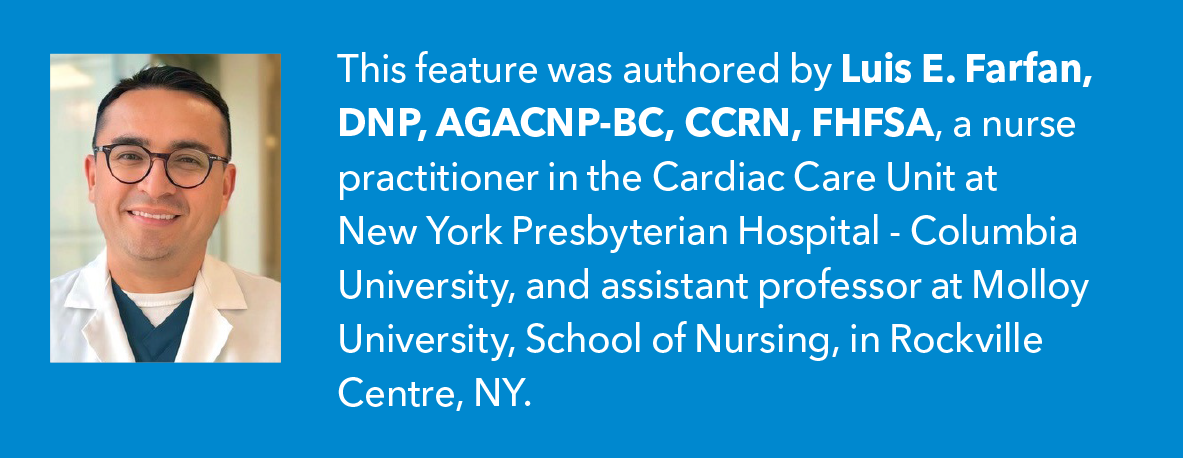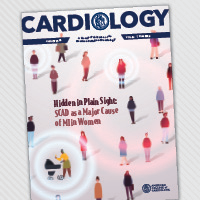
The Hispanic/Latino community in the U.S. faces a disproportionately high burden of both diabetes and cardiovascular disease, making this a pressing public health concern.1 This increased risk also contributes to an increased incidence of cardiovascular complications, including heart disease, stroke and peripheral artery disease.2
Addressing these risks requires early intervention through lifestyle changes – such as improved nutrition and increased physical activity – alongside efforts to expand access to culturally competent health care and services.3 Effective solutions depend on understanding the complex interplay of these factors and tailoring interventions to the unique needs of communities.4
At Greater Risk: A Closer Look at Risks and Challenges
Unhealthy Diet and Lifestyle Habits: Hispanic and Latino patients have higher rates of obesity, smoking and sedentary behavior – all of which increase the risk of developing metabolic syndrome, prediabetes and insulin resistance.
Genetics and Family History: Hispanic and Latino patients have a stronger genetic predisposition to diabetes, as well as a higher likelihood of having a family history of the disease.
Access to Health Care: Limited access to health care impacts the ability of Hispanic/Latino patients to receive timely diagnosis, treatment and management of both diabetes and cardiovascular disease – ultimately leading to poorer outcomes. Barriers to access can include employment status, limited insurance coverage, proximity to health care facilities and high health care costs.
Cultural and Linguistic Barriers: Many Hispanic individuals may not speak English fluently, making it challenging to communicate effectively with clinicians and/or understand medical instructions. Cultural beliefs, including reliance on traditional remedies or mistrust of the health care system, can also impact treatment adherence.
Socioeconomic Factors: Poverty, low income and lower educational attainment are closely linked to the higher rates of diabetes and cardiovascular disease seen in the Hispanic/Latino population. Individuals with limited financial resources and less education may have difficulty navigating the health care system and adopting healthier behaviors.
Strategies to Improve Outcomes
Key strategies to improve outcomes among Hispanic/Latino patients include leveraging telehealth and remote monitoring for increased access, implementing culturally tailored interventions with language-appropriate materials and community engagement, along with advocating for policy changes to address health care disparities and increase the representation of Hispanic/Latino health care clinicians.
Telehealth: Today, telehealth platforms can provide virtual consultations, remotely monitor vital signs and overcome geographic barriers to care, particularly for those in underserved areas. Health organizations can partner with community organizations and leaders to conduct outreach programs, educate about health risks and facilitate access to health care services within familiar settings.
Patient Education: Developing educational materials and programs translated into Spanish, such as those available through ACC’s CardioSmart platform, can ensure a clear understanding of health information and self-management strategies. Collaboration with trusted community leaders and organizations can help in promoting health education and increasing participation in health care programs.
Advocacy: Health policies to reduce disparities in access to quality health care for Hispanic/Latino populations are essential. Advocacy efforts aimed at improving insurance coverage, addressing socioeconomic factors, increasing representation of Hispanic/Latino health care professionals and further research are an important part of comprehensive strategies to improve heart health in this community.

Research: Further research is needed to better understand the unique sociocultural, economic and health care access barriers Hispanic communities face. Encouraging increased participation of Hispanic/Latino patients in clinical trials is also important for understanding optimal treatment strategies.
Read last month’s article about tackling cardiovascular health challenges in immigrant communities.
References
- Aguayo‐Mazzucato C, Diaque P, Hernandez S, et al. Understanding the growing epidemic of type 2 diabetes in the Hispanic population living in the United States. Diab Metab Res Rev 2019;35:e3097.
- Gomez S, Blumer V, Rodrigues F. Unique cardiovascular disease risk factors in Hispanic Individuals. Curr Cardiovasc Risk Rep 2022;16: 53-61.
- Fortmann AL, Savin KL, Clark TL, et al. Innovative diabetes interventions in the U.S. Hispanic Population. Diabetes Spectr 2019;32:295-301.
- Da Costa M. How culture impacts health: the Hispanic narrative. Creat Nurs 2023;3:273-80
- Poghosyan L, Liu J, Spatz E, et al. Nurse practitioner care environments and racial and ethnic disparities in hospitalization among Medicare beneficiaries with coronary heart disease. J Gen Intern Med 2024;39:61-8.
- Dailah HG. The influence of nurse-led interventions on diseases management in patients with diabetes mellitus: a narrative review. Healthcare (Basel)2024;12:352.
- Deverts DJ, Zupa MF, Kieffer EC, et al. Patient and family engagement in culturally-tailored diabetes self-management education in a Hispanic community. Patient Educ Couns 2025;134:108669.
Clinical Topics:
Prevention, Vascular Medicine, Atherosclerotic Disease (CAD/PAD), Diet, Smoking
Keywords:
Cardiology Magazine, ACC Publications, Health Services Accessibility, Diet, Smoking, Obesity, Peripheral Arterial Disease, Hispanic Americans, Genetic Predisposition to Disease, Diabetes Mellitus
